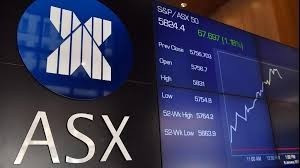Weekly market update
Written and accurate as at: Jun 25, 2018 Current Stats & Facts

The Australian equity market added +2.1% last week (S&P/ASX 300) with some evidence that it is attracting flows from offshore investors seeking more defensive exposure. The significant stock dispersion of the last twelve months was evident again last week, although we did see leadership shift to the banks for the first time in a while.
ANZ (ANZ, +7.4%) was the best performing of the big four banks, as they reloaded their stock buyback programme, doubling the amount from $1.5bn to $3bn with some reinsurance proceeds. The programme size is evidence of ANZ’s strong capital position, which is well above the APRA target and provides one bright light in an otherwise gloomy environment for the banks. At these levels, the buybacks are accretive and a good use of cash. Commonwealth Bank (CBA, +7.1%), National Australia Bank (NAB, +5.7%),Westpac (WBC, +5.3%), and Macquarie (MQG, +4.1%) also outperformed, helped perhaps by a rotation away from Telstra (TLS, -8.8%).
TLS’s long-awaited investor day emphasised the challenges facing the mobile phone market in Australia, with competition intensifying as the largest player attempts to shift tack from being the disrupted to the disruptor. Management flagged an additional $1bn of costs that the company expects to cut over the next three years, on top of the existing $1.5bn programme, driven by job cuts and rationalisation of its phone plans from 1800 to 20, simplifying the business. We expect to see more detail on the news plans begin to emerge from July. However the key feature was management’s guidance to a -17% fall in core underlying earnings for FY19. Following a -9% fall in H1 FY18, and an expected -13% fall in H2 FY18, this accelerating trend in earnings declines is the key challenge facing the business. While reporting is short on detail, we suspect that the company’s rapidly disappearing ability to charge for excess data is playing a significant role in this. It is possible that the company may go to unlimited data plans and drop prices, placing pressure on competitors who may struggle to match this in an attempt to regain the initiative in the mobile phone market. Our view remains that we will ultimately see rationalisation and sustainable profitability among mobile phone providers. This should benefit TLS, which continues to grow its subscriber base, and the company is signalling that it will defend its market share. However intense competition is likely to see the market endure some pain before consolidation occurs.
Elsewhere private hospital operator Ramsay Healthcare (RHC, -4.8%) downgraded FY18 earnings growth expectations from 8-10% to 7%, citing flagging NHS volumes in the UK as well as a subdued environment in Australia. While weaker demand for procedures in Australia is one issue, the key challenge on RHC’s horizon is upcoming contract negotiations between the private insurers and hospitals. The risk from a possible Labor federal government looms large here, with Bill Shorten stating that private insurance premium growth would be capped at 2% per annum, putting pressure on their business models and, in turn, on what they are willing to pay hospitals.
The miners also underperformed, with BHP (BHP) down -3.1%, Rio Tinto (RIO) -3.8% and Fortescue Metals (FMG) -2.6%. Some M&A movement in the resource sector demonstrates the recent strength in cash flow, although at this point the buyers are tending to be midcap players. The market maintains an eagle eye upon the large diversifieds, wary for any signs of deviation from the recent discipline in capital allocation. For the moment, both BHP and RIO seem content with paying down debt and returning capital to the shareholder.
Finally, BP announced that they were walking away from the deal to acquire Woolworths’ (WOW, +2.4%) petrol station business following protracted negotiations with the ACCC. The deal was widely expected to pass when it was announced, and the subsequent difficulties demonstrate the more visible role that regulatory bodies across the market have been taking in recent times. The news was good for Caltex (CTX, +5.6%) which stood to lose volume. It remains unlikely that WOW’s desire to offload the stations has disappeared, however it is unclear if the asset is attracting any interest from other parties.










